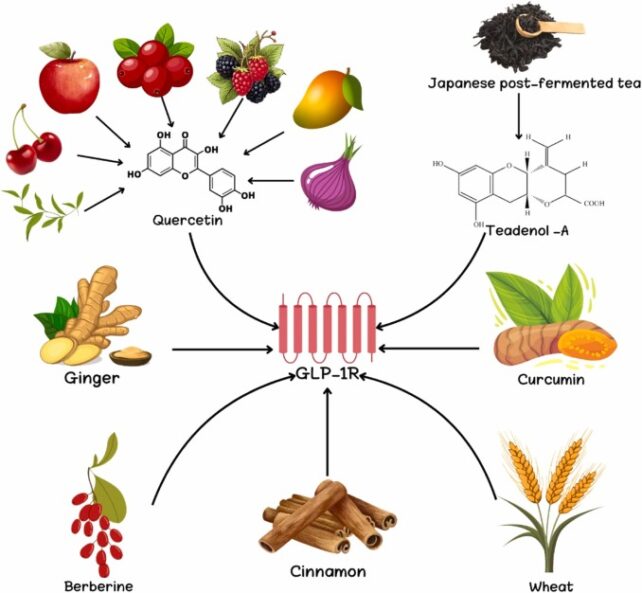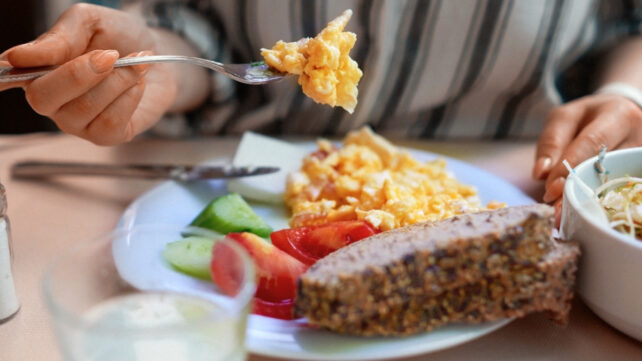Drugs like Ozempic have not only revolutionized the way we treat type 2 diabetes and manage weight, they've also revealed the power of our gut hormones.
Now that we know signals from the gut to the brain suppress the appetite and help control blood sugar levels, researchers are on the hunt for drug-free triggers.
Medicines like Ozempic are designed to mimic a natural "satiety hormone" that is produced by the gut, called GLP-1 (glucagon-like peptide-1). However, the synthetic version lasts longer in the body.
Related: Scientists May Have Discovered a Natural Alternative to Ozempic
No natural compound tested so far can exactly replicate the effects of these long-lasting injections, but early research indicates that certain foods, and the timing of their consumption, could still be useful.
A team from Heliopolis University in Cairo, led by microbiologist Tohada AL-Noshokaty, wants to "usher in a new age of GLP-1 regulation by tapping into nature's resources."
"Patient compliance and quality of life could be greatly enhanced by using natural GLP-1 modulators, which may be easier on the body," the authors suggest in a review for Toxicology Reports published in June.
"For populations with limited financial or other resources," they add, "natural remedies may provide a more accessible and less expensive alternative to conventional medicine."
Watch the video below for a summary of the research:

For their review, AL-Noshokaty and colleagues combed through the literature and found several examples of natural products that may have some of the same characteristics as GLP-1 drugs.
The research is still preliminary, but the natural resources scientists are investigating include cinnamon, wheat, ginger, fermented green tea, and a bitter plant compound called berberine.

Because natural GLP-1 only sticks around in the body for a short period before it is broken down by enzymes, researchers think that eating these natural compounds at certain times is key to reaping their benefits.
In the last year, for instance, several randomized controlled trials have found that a 'premeal' of whey protein (a by-product of the cheese-making process) can improve blood glucose and insulin levels for a short time thereafter.
A trial published in September 2025 randomized 18 individuals with obesity and without type 2 diabetes to drink either whey protein or water 15 minutes before breakfast and again before lunch for four consecutive days.
Those who drank the whey protein showed significantly reduced glucose levels after breakfast, with a modest appetite-suppressing effect at lunch.
The possible mechanisms may involve effects on GLP-1 hormones, the authors of the trial hypothesize, "that are secreted from the gastrointestinal tract and affect appetite by regulating digestive processes and neural signaling in the central nervous system."

Medicinal plants are also turning out to be fruitful areas of research. In August 2025, a review found that flavonoids, which contribute to bitter flavors in, say, citrus or hops, can stimulate GLP-1 release, too.
As can dietary fibers. A systematic review and meta-analysis published in September 2025 found that dietary fiber supplements benefit individuals who are overweight or obese by improving their blood sugar control and insulin sensitivity.
It's not yet clear how fibers achieve this, but the authors of the review suspect that they increase the release of gut hormones, like GLP-1, thereby stimulating insulin and suppressing appetite.
Related: Your Gut's Methane-Making Microbes Could Secretly Turn Fiber Into Extra Calories
Much more research is needed to understand how different foods impact gut hormones, but together, these experiments suggest that there are natural and subtle ways to trigger the same mechanisms as GLP-1 drugs.
This leaves open the possibility that eating some types of natural foods at certain times of day can possibly protect against the development of type 2 diabetes and other metabolic issues.
It was only in the early 1990s that researchers first infused GLP-1 intravenously in a clinical trial.
Three decades later, we are still teasing apart the details of this crucial physiological mechanism, now responsible for some of the most popular drugs in the world.
The review from AL-Noshokaty and colleagues was published in Toxicology Reports.

